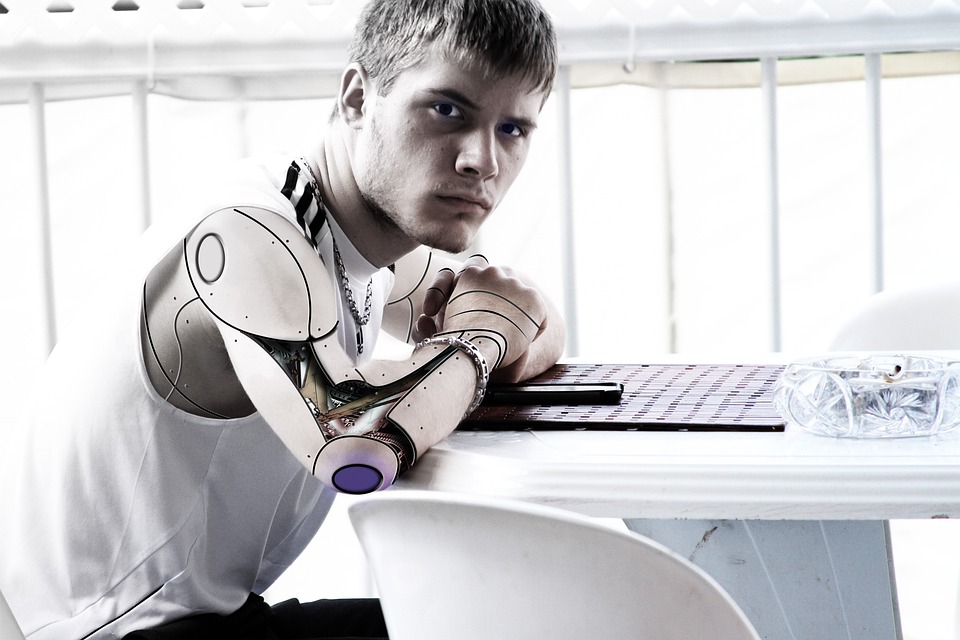Ad Code
Translate
List of 6,000+ Dofollow Commentluv Blogs FREE (Updated 2025)
What is Ozempic (semaglutide)? (Updated in 2025)
How To Find Suitable Properties In Cyprus? (Updated in 2025)
Smart strategies for trading on crypto exchanges
Applications for Universal Robot Cobots
Cobots
or Collaborative Robots have been showing up in the robotic market since 2017,
and the collaborative robot market is only expected to keep growing,
considering that many industries are looking to introduce cobots.
Robots
have replaced human labour in critical and risky factory jobs to operate within
safety measures. Since the industrial revolution, robots have taken away some
of the spatial and environmental dangers that traditional robots tend to cause.
Cobots can there successfully work alongside humans in a factory.
Compared
to traditional robots, cobots have a more natural interaction with humans. They
can comfortably share the same workspace as factory employees, and they can be
easily reprogrammed.
Common Applications for Cobots
Picking and Placing
Pick
and place robots are designed to identify objects or parts in a factory and
package them accordingly. Before cobots, human workers would do repetitive pick
and place tasks all by themselves. Because of how mundane this task can get;
workers are prone to make mistakes. They are also prone to strain or injury due
to repetitive physical motions.
Pick
and place robots are best suited for first-time collaborative robot users. All
the robot has to do is pick a workpiece and place it in a different location. This could be packaging or sorting functions from a conveyor belt system and tray; however, the latter needs advanced vision systems.
Packaging and Palletizing
This
is another subset of pick and place where products are packaged and palletized.
Before products can leave the factory floor, they need proper preparation for
shipment. This includes; box assembling and loading, shrink-wrapping, and box
collating and placing on a pallet for shipment.
These
tasks are ideal for cobots because they involve small payloads, and they are
repetitive. Businesses running high or low mixes of volume production require
rapid product changeover.
For this application to successfully
synchronize robotic movement with a conveyer, conveyor tracking is required.
Products with non-uniform shapes may also need a vision system.
Machine Tending
Machine
tending in factories requires a worker to stand in front of a CNC or injection-modelling
machine, or any other similar device for many hours and keep tending to the
machines' operational needs. The worker could need to change the tools or
replace raw materials. For a human operator, this is a long and tiring process.
Cobots
will free human operators because a single cobot can tend to many machines.
This will also increase productivity in the factory. However, these cobot
applications need the robot to have input and output interfacing hardware
where you can indicate what the robot's next cycle is or when the materials
might need replenishing.
Processing Tasks
Universal robots are one of the
few robots that feature a specially designed welding end-effector. Some cobots
have different end-effectors like glue dispensers for various process tasks.
Process tasks need tools to interact with workpieces like dispensing,
processing, glueing, or welding.
These
process tasks need a tool to go down an already fixed path over and over.
Hence, they take a lot of time to train new workers to achieve the required
finish. Programming can be finished on one unit and copied to another.
Hence
with cobots, human workers don't have to perform precise and repetitive movements.
Cobots will ease programming through place and position records allowing
workers with welding experience to program them easily.
Cobots
also feature a polyscope interface that helps maintain constant TCP speed. This
ensures that the cobot deposits material at a steady rate. In these cases, the
end effectors are unique because they need to hold a sealant, solder paste,
welding torch, or glue.
In Conclusion
In
the future, cobots will play more significant roles in the upcoming industrial
revolution. The only disadvantage is that many unskilled labour jobs can be
rendered useless overnight by cobots. Luckily, new jobs will still open because
even cobots need occasional maintenance.


0 Comments